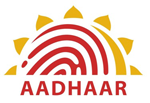
Over the past couple of years an initiative by the Government of India has been gaining momentum which could have far reaching implications for its residents. In early 2009, the Unique Identification Authority of India (UIDAI) was setup to issue universal ID’s (UID), they have called the program “Aadhaar” which means foundation or support. However, most people still refer to the program as UID. This is the one rare initiative from the Government of India that excites me because it could help the people that need it the most – the poor.
Currently, most government aid programs are pilfered so heavily that at one point Rajiv Gandhi famously said only 15% of the benefits reach the poor. The Public Distribution System (PDS) distributes subsidized food and non-food items to India’s poor via a ration card that is issued. However, the ration cards get duplicated and “ghost” accounts are created, then the food is taken and sold on the open market. Even before the food gets to the recipients there is “leakage” all along the supply chain – transportation, warehouses and government officials.
The aim of Aadhaar is to create a central database and provide proof of identity when using government services. Aadhaar will be technologically advanced in that it will be a combination of a person’s iris scan, fingerprints, photo and optionally include demographical information such as age, sex, address, father, mother, etc. With an iris scan you can be sure that only the receipt of the food or cash-subsidy is receiving the benefit and not a middle man, which is often the case today. Aadhaar has an ambitious goal of issuing 600 million numbers in the next 4 years. The Aadhaar number will be 12 digits long and oddly enough there is no card, it’s a piece of paper with a number. Users would authenticate their identify via fingerprints and an iris scan hence no need for a smart ID card. Aadhaar will be useful in 5 areas – 1. food distribution via PDS; 2. National Rural Employment Guarantee Act (NREGA) ; 3. health services; 4. education; and 5. financial services. Number 5 excites me the most since it might put an end to the poverty tax that so many citizens of India face on a daily basis.
The poverty tax is everywhere if you are poor in India. If someone wants a loan they can’t goto their local bank because they don’t have the required documentation, which leaves them to the loan sharks where the interest rates charged would bring a tear of joy to any investment banker. When you receive money from someone you can’t put that into a bank account so you lose out on the interest that you might have received from a bank. If you receive a pension, you might have to pay a “fee” to the clerk to speed up the transaction. Same issue with food, subsided kerosene, government jobs, etc…if you want something you have to pay a fee. That fee hurts more if you earn less and hence it’s called the poverty tax.
Financial institutions are thrilled at the prospect of Aadhaar because they can start to market their products to potentially 600 million new customers. With the large number of mobile phone users it also means that banks don’t have to setup branches in every corner of the country, they could use the mobile phone to keep track of balances instead of the old school passbooks. Near-field communications (NFC) is probably a couple years away from being adopted by the mass market but that is potentially another game changer in the way people transact in India.
Aadhaar would also streamline the plethora of numbers that many middle class people need to keep track of. If you are a taxpayer and an investor you might have several numbers such as PAN for taxes, TAN, TIN, MIN, DIN and folio numbers for investing in mutual funds. The reason for multiple numbers is because each group has a vested interest in keeping their numbering system because it creates jobs for them and more importantly they have access to the money flow. Knowing where the money is coming and going is a source of information that can be used against an individual.
For Aadhaar to work it needs to be made mandatory, currently it’s optional and that might be more of a political move. If Aadhaar was mandatory on day one then people would jump to the next logical step – using Aadhaar for voting. And changing anything to do with the voting process would absolutely disrupt the status quo and would be shot down by politicians in a heart beat. However, once end-users start craving for the “optional” Aadhaar then nothing would stop its mass adoption which would make it mandatory in the end. The second thing that needs to happen is that Aadhaar should be an acceptable form of Know Your Customer (KYC), this would help financial institutions, mobile phone providers or really any one that needs to authenticate an individual for a companies product or service. Since the government would have validated someones identity then why go through the process again, this would also lower the acquisition costs for companies and allow them to provide “no frills” type services.
Facebook Connect in the virtual world has turned into the de-facto standard for identify, whereas Aadhaar has the same potential in the real world for India. Aadhaar could be the catalyst to open up many more markets for companies and also bring products to a set of customers that have previously been excluded from financial services.
The above article was syndicated on VCCircle.com.
Update:
June 4 – View a quick 10 slide summary about Aadhaar (via SlideShare)
May 18 – India’s Poor Yet to Reap Full Benefits of Its Anti-Poverty Programs (World Bank report)
April 30 – India’s $9 Billion Jobs Program Fails its Poor (WSJ link)


1 Comment